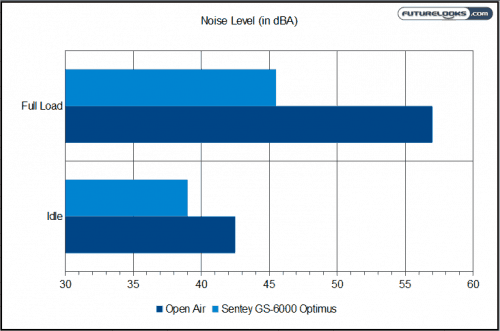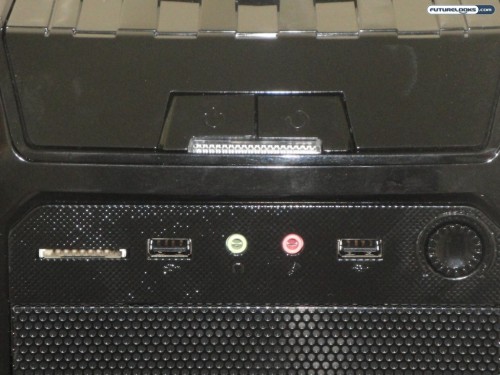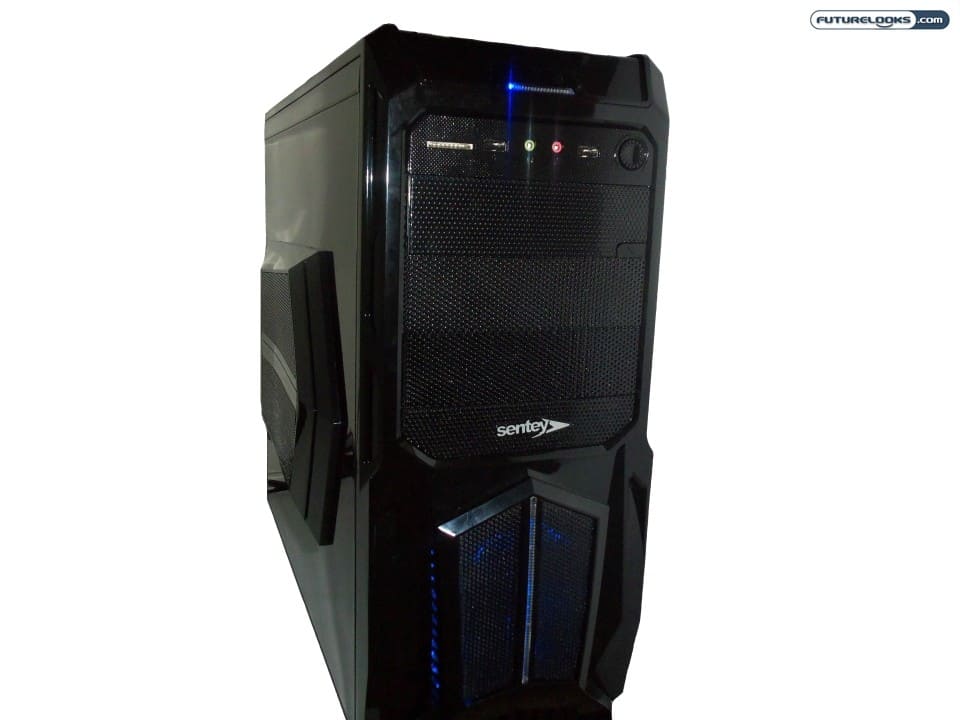Noise Level Results
The only thing you should note here is I left all the included fans for the Sentey GS-6000 Optimus at 100%. The 5V low RPM fans simply do not produce enough noise to change the overall noise level of the system. These noise levels were take from 1 meter away in a silent room using a noise level meter.

As can see, being able to contain the PC inside of the case greatly reduced noise levels at full load. This was a combination of both the case muffling the noise and providing better cooling which kept the stock AMD CPU cooler from going up to full speed.
Final Thoughts and Conclusion

The Sentey GS-6000 Optimus is a unique mix of great build quality and lacklustre bonus features. Overall, I think increasing the height and width of the case by just a centimeter or two could make a world of difference for cable management and general tidiness. Issues like the 24 pin cable from the PSU not being able to be routed behind the motherboard tray, and clearance issues with very large CPU coolers could all be fixed with just a little more space here and there.
Starting with the front, the I/O panel could have been placed in the same area as the Power and Reset button to give the case four 5.25” bays. There is a slot in the interior frame for 4 external 5.25 bays, so why not use all of them? The fact most devices with MMC/SD cards come with a USB cable, makes the built-in MMC/SD card reader unneeded. I would have liked a USB 3.0, eSATA, or both on the I/O panel instead. But of course, the more you add, the higher the price.
The expansion slot’s tool-less system creates an issue with non-standard expansion card panels. It works ok with single slot cards, but the tool-less clamps don’t hold well enough for heavier ones. The whole design seems several years old and could benefit from a newer way to provide this feature. While still entry level, many gamers and enthusiasts opt for upgrades like dual GPUs to increase gaming performance.
The included instructions were almost useless. They do not properly guide you through installing components as steps seem to be missing. Explanations of many of the features are completely omitted, yet there was room for several pointless diagrams. While I did not need the instructions to build a rig with the Optimus, I would like to see some actual effort in writing the guide. A simple explanation of how your tool-less systems work and the best way to remove the front face can be a world of difference to rookie builders.
The Sentey GS-6000 Optimus packs a lot of good features you will not find in most cases in the same price range. It has solid build quality, produces little additional noise, is nearly completely tool-less, even includes 4 fans, and is competitively priced. It also includes washable dust filters in both intake sections which is a nice touch for any entry level case. Something that Cooler Master could really learn from as their CM Storm Enforcer is quite horrible in this regard and costs more. The minor issues here become moot points as almost every case in this size and price point will have them too.
The Sentey GS-6000 Optimus at an MSRP of only $59.99 is a well built, entry level case I think anyone should consider for a mid-tower build.
Pros:
- Solid Build Quality
- Great paint job
- Simple, easy to use Tool-less systems
- Includes 4 fans
- Very well ventilated
- Low noise
Cons:
- Rear tool-less clamps could be troublesome
- A little cramped
- Front I/O wastes 5.25″ bay
- Useless User Guide
Overall Rating: 7.5 /10.0

Help Us Improve Our reviews by Leaving a Comment Below!

